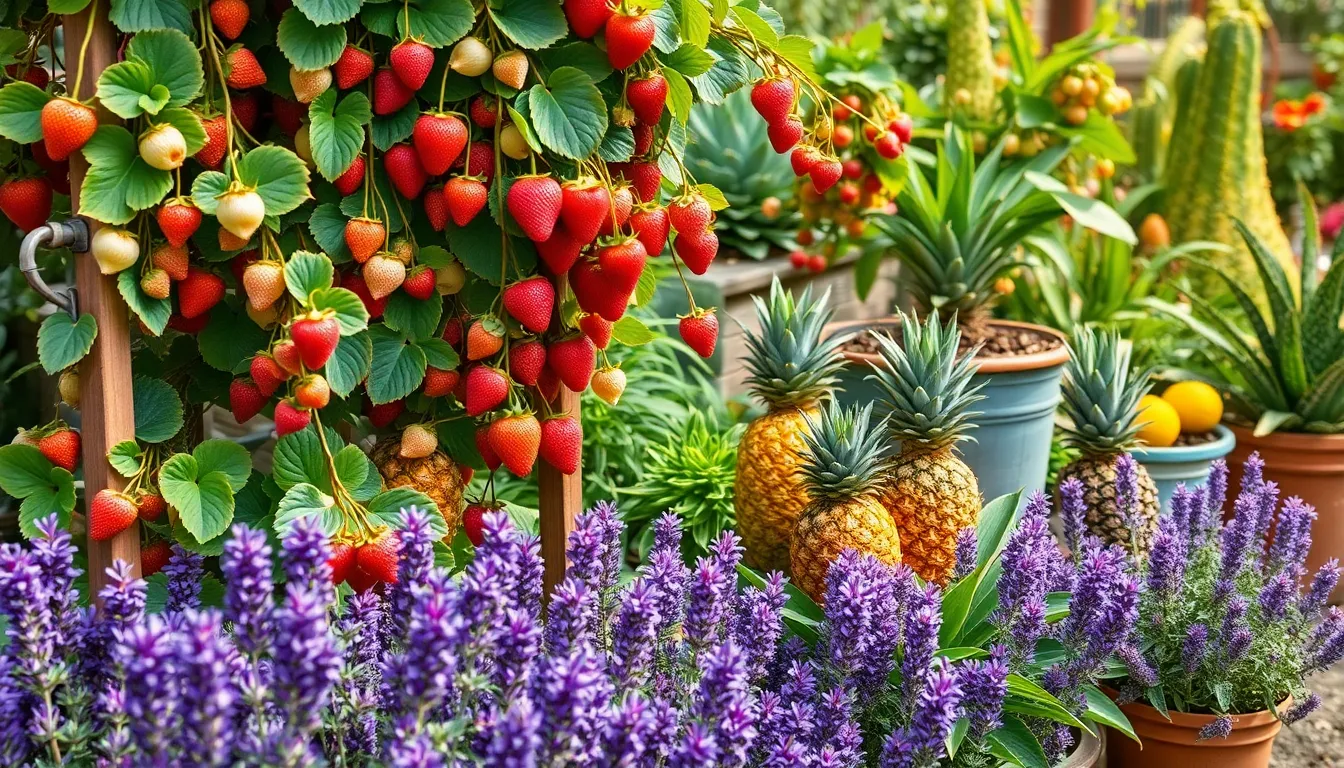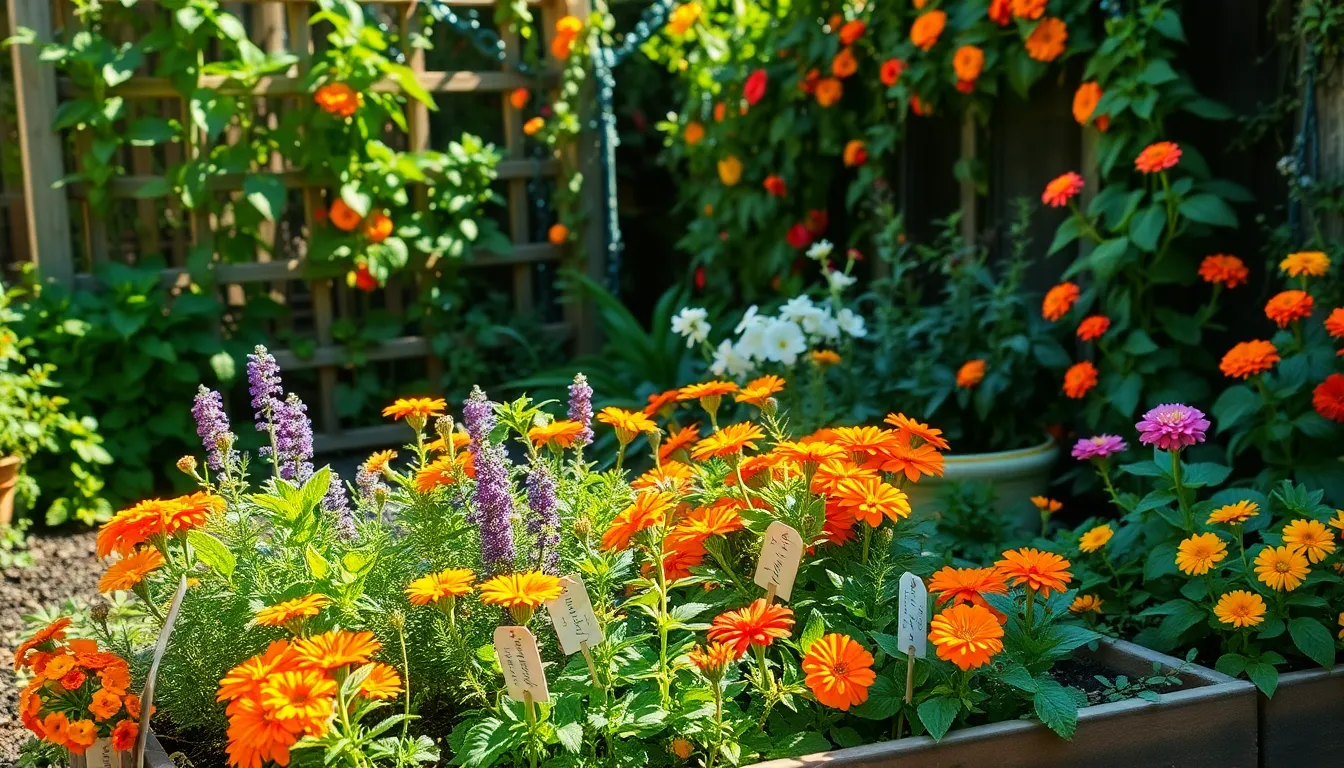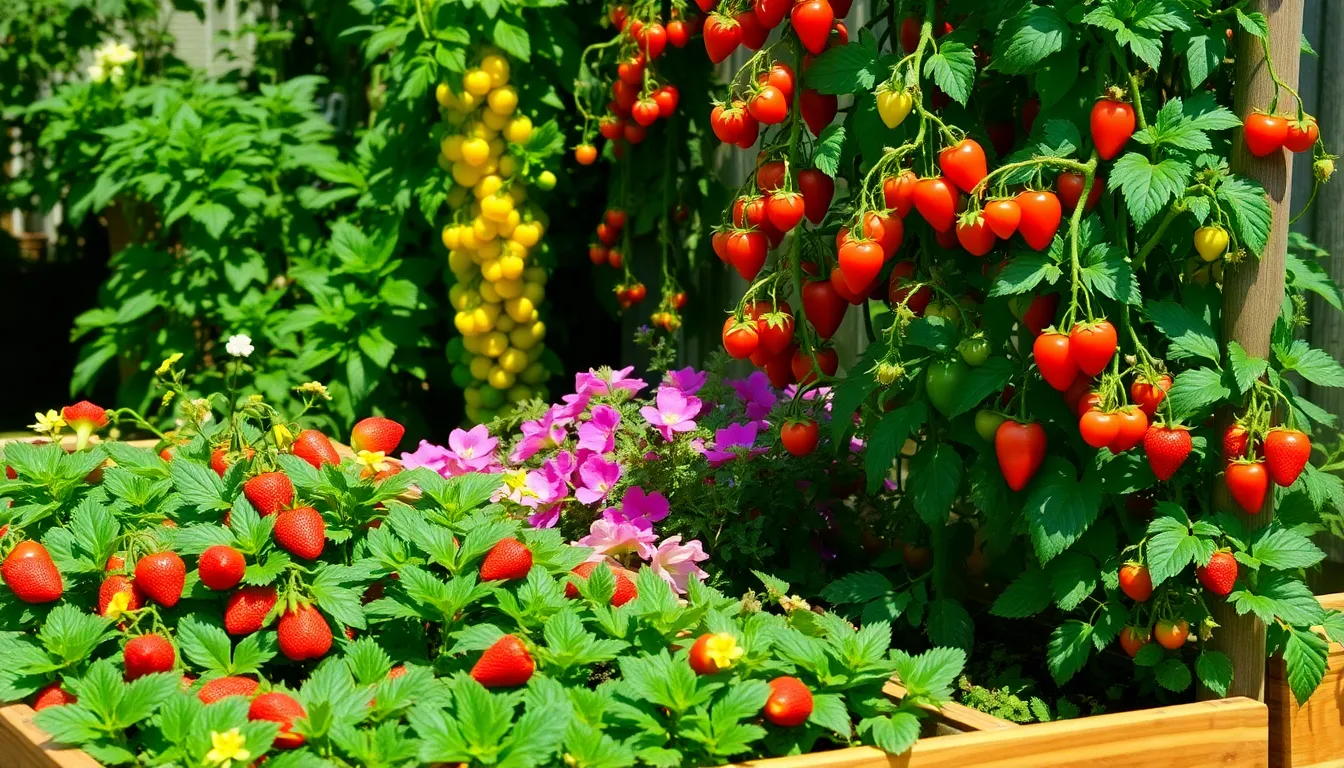Imagine stepping into your garden and being greeted by a vibrant tapestry of colors, not from flowers, but from a bounty of luscious fruits waiting to be picked. Whether you’re a seasoned gardener with years of experience or just starting to explore the joys of gardening, creating a fruit garden brimming with color can transform your space into a feast for the senses and a source of fresh, healthy harvests.
For beginners, starting a colorful fruit garden can feel like a daunting task, but with the right inspiration and guidance, it’s a journey filled with rewards. Experienced gardeners will find that adding a splash of color with diverse fruit varieties can rekindle their love for gardening, offering new challenges and delightful surprises.
In this article, we’ll explore nine vibrant fruit garden inspirations that will ignite your creativity and help you design a garden that’s both beautiful and bountiful. From selecting the right plants to understanding their unique care needs, you’ll discover practical tips and ideas to cultivate a garden that reflects your personal style and provides an abundance of delicious produce.
Choosing Vibrant Fruit Varieties
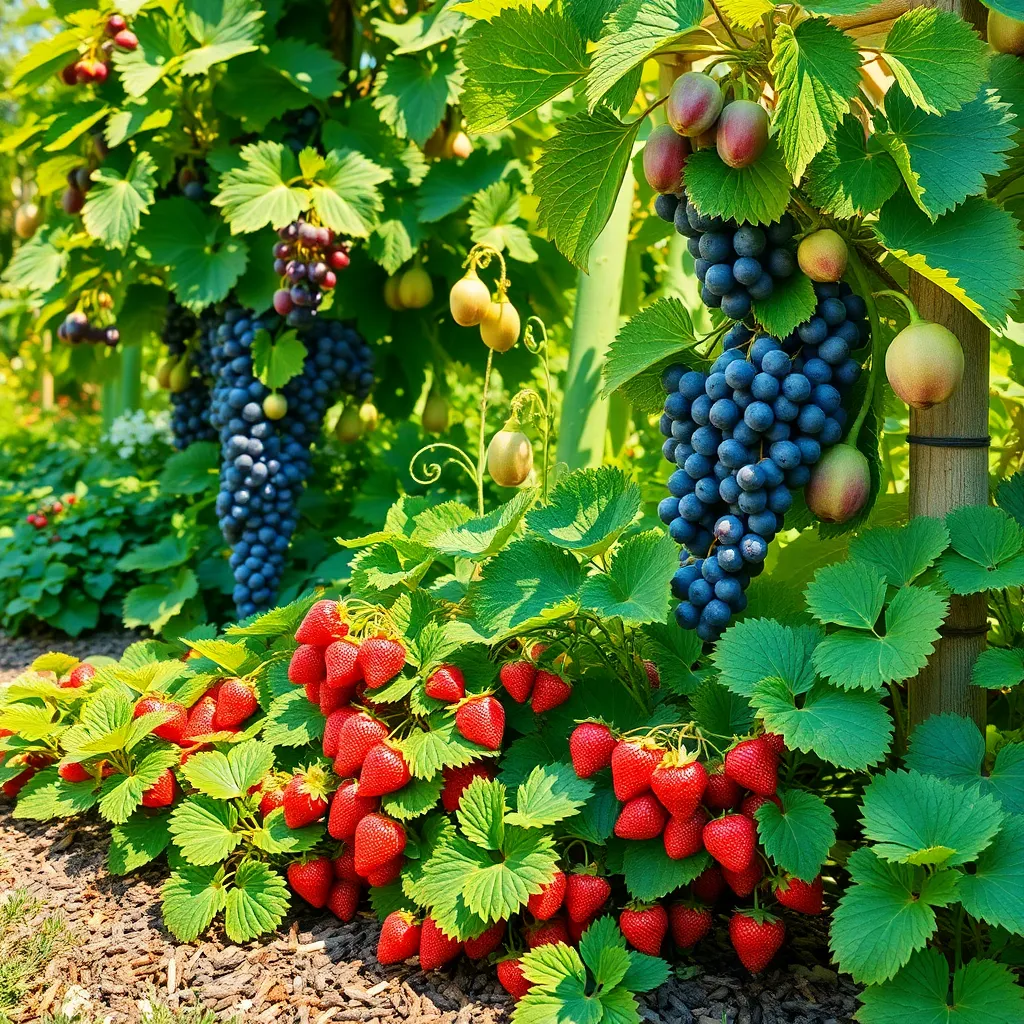
To create a colorful fruit garden, consider selecting varieties that not only taste great but also offer visual appeal. Prioritize fruits like rainbow chard, red currants, and golden raspberries, which provide a spectrum of colors and make your garden pop.
When choosing fruit varieties, it’s essential to consider your local climate and soil conditions. For optimal growth, ensure your soil is well-draining and rich in organic matter, which can be achieved by regularly incorporating compost.
For beginners, starting with easy-to-grow, vibrant options such as strawberries and blueberries can be rewarding. These plants thrive in slightly acidic soil, so consider using a pH testing kit to adjust your soil conditions accordingly.
Advanced gardeners might experiment with grafting techniques to grow multiple fruit varieties on a single tree. This not only saves space but also provides a unique opportunity to enjoy diverse fruits from one plant, enriching your garden’s visual and taste profile.
Designing a Colorful Garden Layout
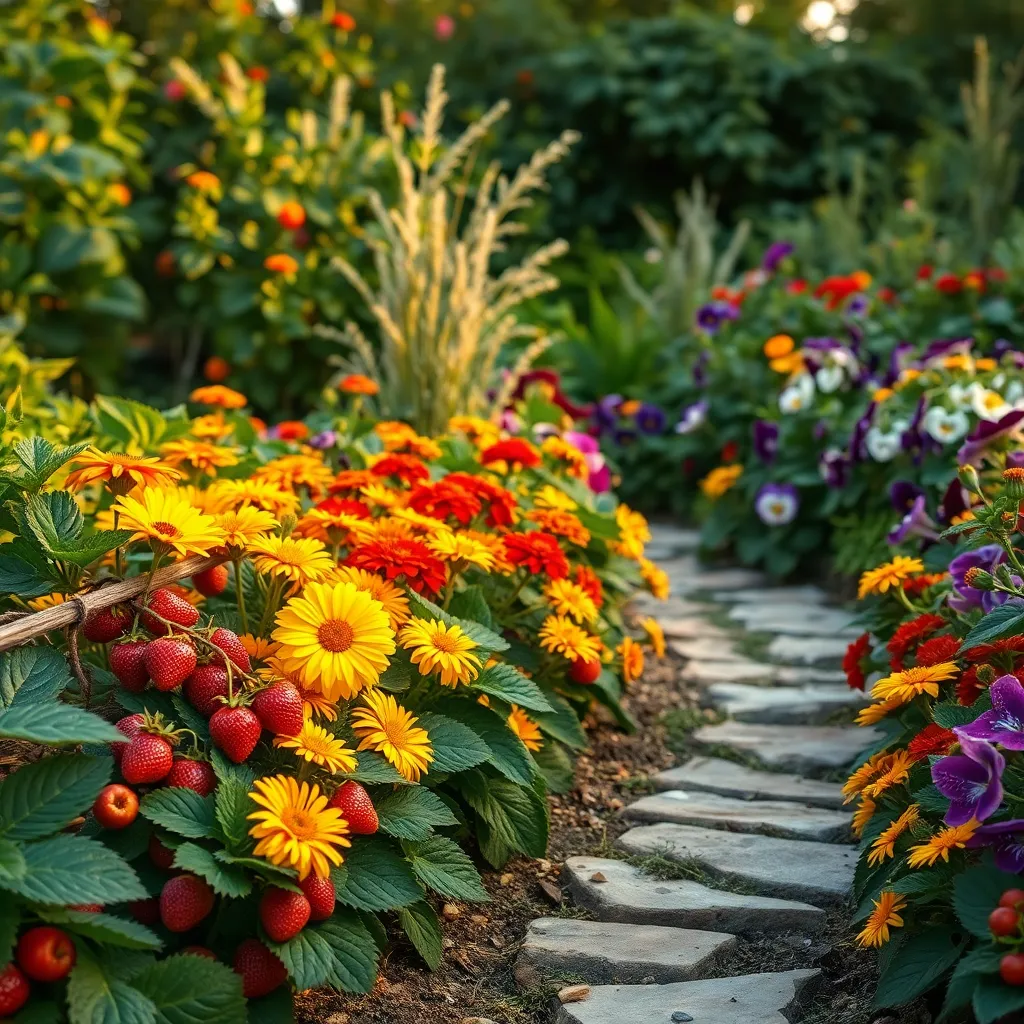
When designing a colorful garden layout, start by grouping plants with complementary colors to create a harmonious visual impact. Use the color wheel as a guide to combine fruits like red strawberries with their green foliage, and the deep purple of blackberry bushes for vibrant contrast.
Consider the height and growth habits of your fruit plants to add depth and dimension to your garden. Plant taller varieties, such as raspberry canes, towards the back and shorter, bushier plants like blueberries in front to ensure all plants receive adequate sunlight.
Soil health is crucial for maintaining a colorful and productive garden. Use a nutrient-rich, well-draining soil mix to support healthy root development, and add compost annually to boost fertility and moisture retention.
Watering practices can significantly impact the vibrancy of your garden. Ensure consistent watering by installing a drip irrigation system, which provides targeted hydration without over-saturating plant roots.
Incorporating Edible Landscapes
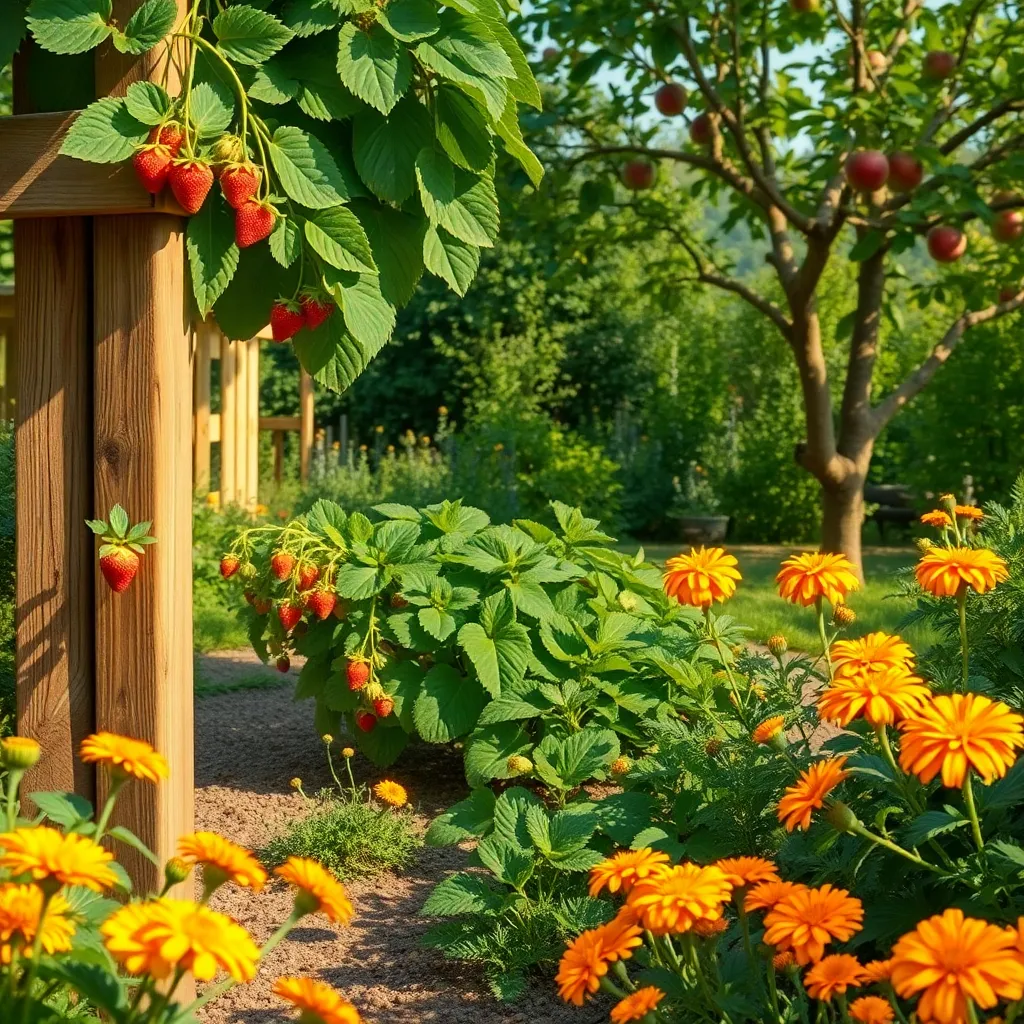
Edible landscapes seamlessly blend beauty with practicality, offering aesthetic appeal and fresh produce right at your doorstep. To start, consider plants that are both visually striking and productive, such as rainbow chard or purple basil, which add vibrant colors to your garden along with their culinary uses.
When planning your edible landscape, focus on plant diversity to create a visually dynamic and ecologically balanced environment. Incorporate a mix of annuals and perennials to ensure year-round interest; for example, plant strawberries for a quick return and blueberry bushes for a longer-term harvest.
To thrive, most edible plants require well-draining soil enriched with organic matter, such as compost, to support healthy growth. Regular watering is crucial, especially in the early growth stages; aim for consistent moisture levels and avoid letting the soil dry out completely between waterings.
For those with more experience, integrating vertical gardening techniques can maximize space and add layers to your edible landscape. Use trellises or arbors to grow climbing plants like kiwi vines or grapes, which provide both shade and delicious fruit.
Seasonal Planting for Year-Round Color
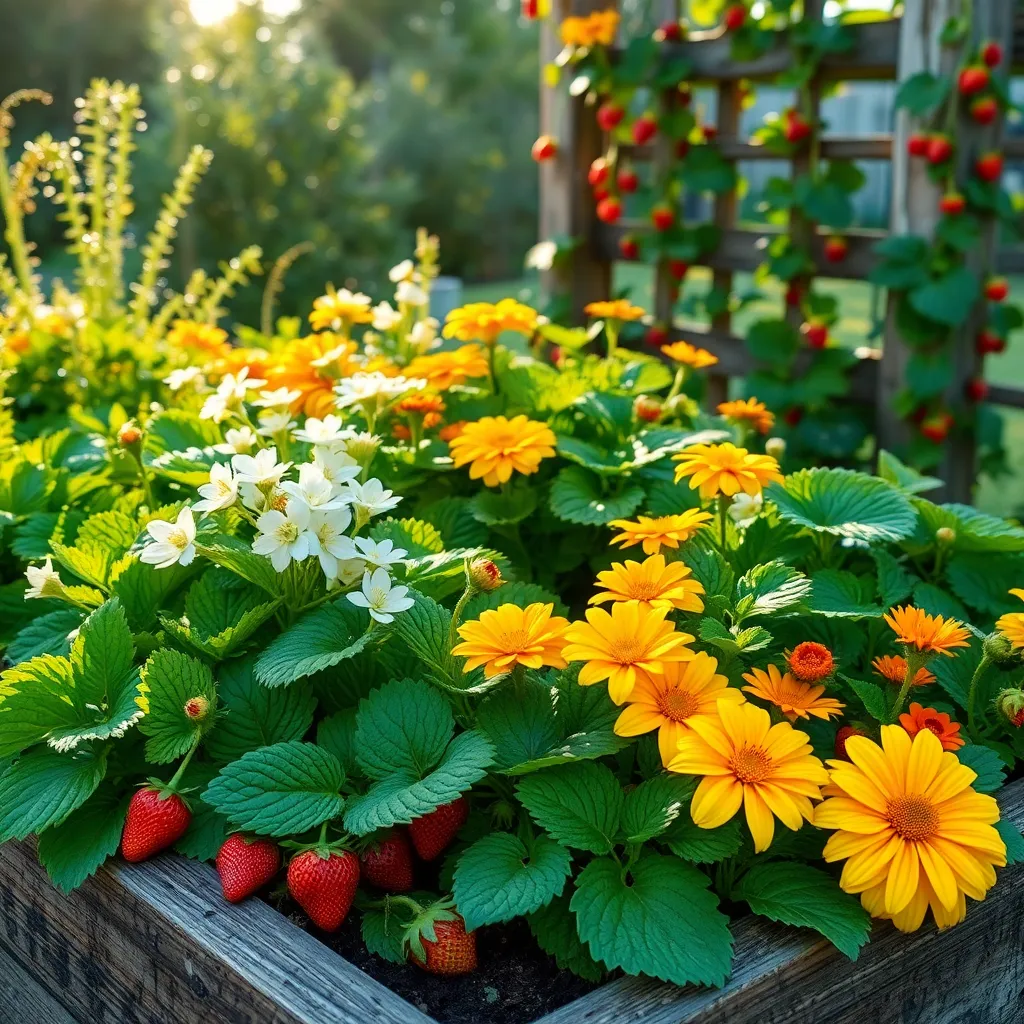
To achieve year-round color in your fruit garden, it’s essential to plan seasonal planting effectively. Start by selecting a variety of fruit plants that thrive in different seasons, ensuring a continuous display of blooms and fruits throughout the year.
Consider planting early-blooming fruits like strawberries in spring, as they not only offer a burst of color but also produce delicious berries. For a summer display, opt for raspberries or blueberries, which are not only visually appealing but also provide a bountiful harvest.
As autumn approaches, incorporate fruit trees such as apples or pears that offer vibrant foliage and late-season fruiting. These trees not only enhance the garden’s aesthetic appeal but also require minimal maintenance once established.
Winter need not be devoid of color; consider planting evergreens like citrus trees that can offer both greenery and bright, cheerful fruits even in colder months. Ensure these trees are placed in well-drained soil and receive adequate sunlight to thrive.
Companion Planting for Healthier Yields
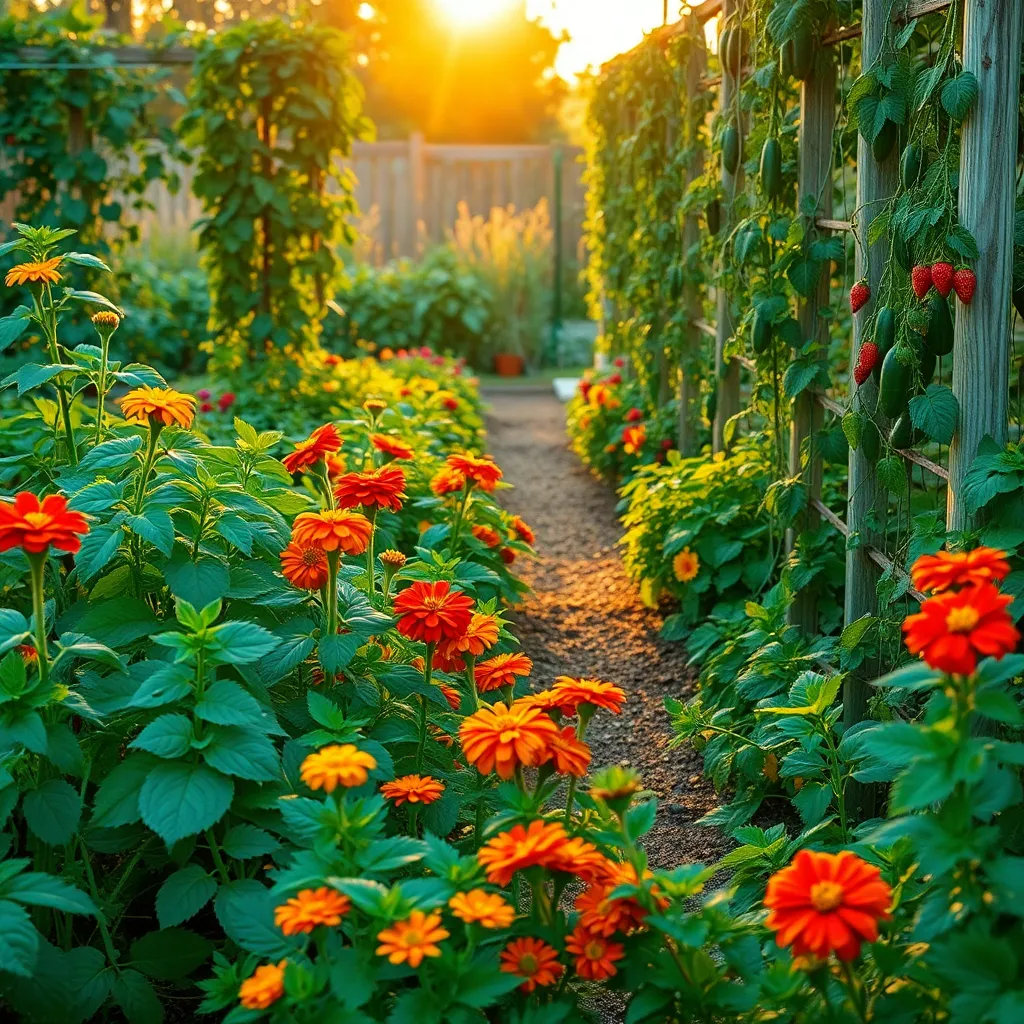
Companion planting is a time-honored technique that can significantly boost your garden’s productivity. By strategically pairing plants, you can enhance growth, deter pests, and improve soil health, leading to healthier yields.
Consider planting tomatoes alongside basil, as this combination can enhance the flavor of the fruit while repelling harmful insects. Basil acts as a natural deterrent for pests like aphids, creating a safer environment for your tomatoes.
For gardeners looking to add color and vibrancy, marigolds are an excellent choice to plant near fruit-bearing plants. Their strong scent not only adds aesthetic beauty but also repels nematodes and other soil-borne pests, protecting your plants’ roots.
Advanced gardeners might explore the benefits of interplanting legumes such as beans with corn. Legumes fix nitrogen in the soil, providing essential nutrients for corn and improving soil fertility without the need for chemical fertilizers.
Maximizing Sunlight and Shade Balance
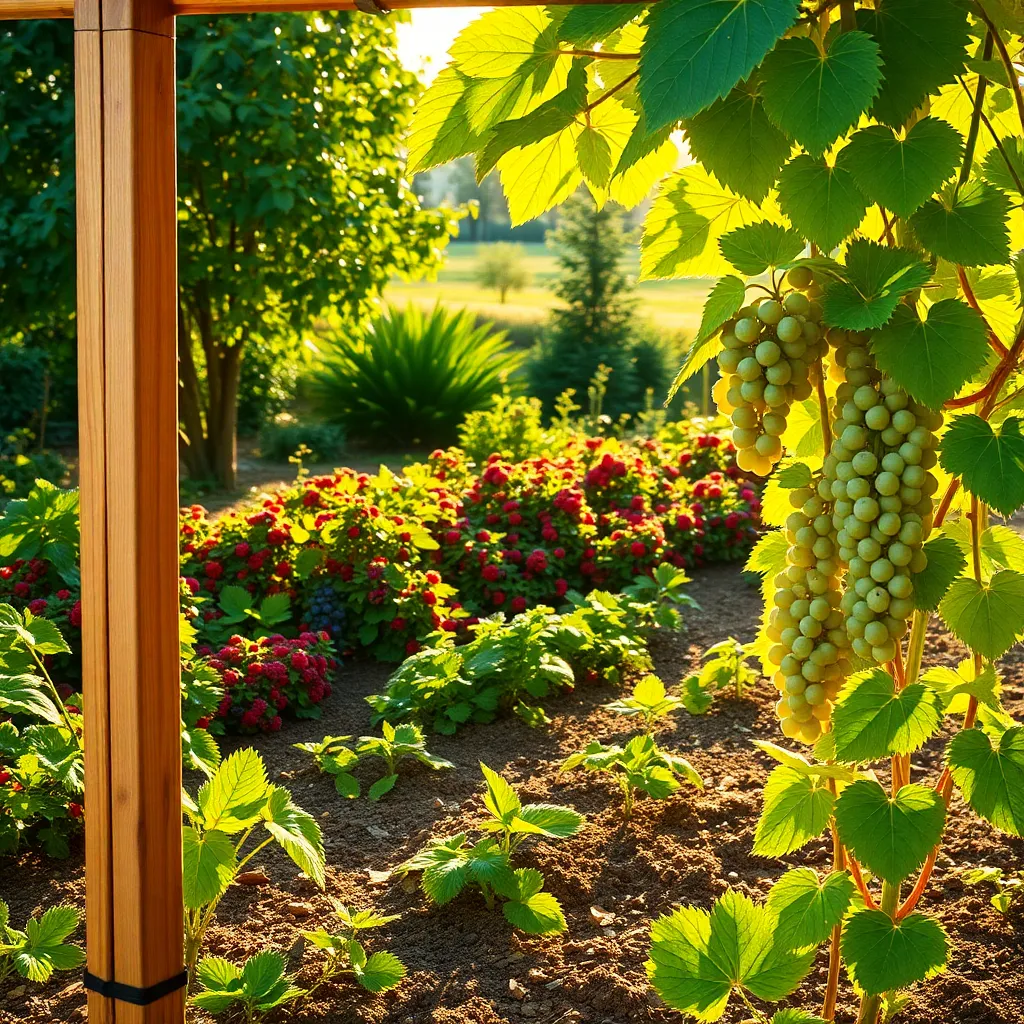
To create a vibrant fruit garden, achieving a balance between sunlight and shade is crucial. The right amount of sun will enhance fruit production, while strategic shade can protect plants from overheating and conserve soil moisture.
Begin by observing your garden’s natural light patterns throughout the day. Identify areas that receive full sun, partial shade, and full shade, as this will help determine where to plant each type of fruit.
For sun-loving fruits like strawberries and tomatoes, choose spots that get at least 6-8 hours of direct sunlight. Ensure that these areas have well-draining soil to prevent root rot, and consider mulching to retain moisture and suppress weeds.
On the other hand, fruits like blueberries and currants thrive in partial shade, especially in hotter climates. Plant them in areas that receive morning sun and afternoon shade, and use organic matter to enrich the slightly acidic soil they prefer.
For a more advanced approach, consider using trellises or shade cloths to manage light exposure. This technique allows you to provide the perfect mix of sun and shade, especially useful in gardens with limited space.
Regularly assess your plants for signs of too much sun or excessive shade, such as leaf scorching or sparse fruiting. Adjust your garden layout and shading techniques accordingly, ensuring each plant receives its ideal conditions.
Creative Container Gardening Ideas
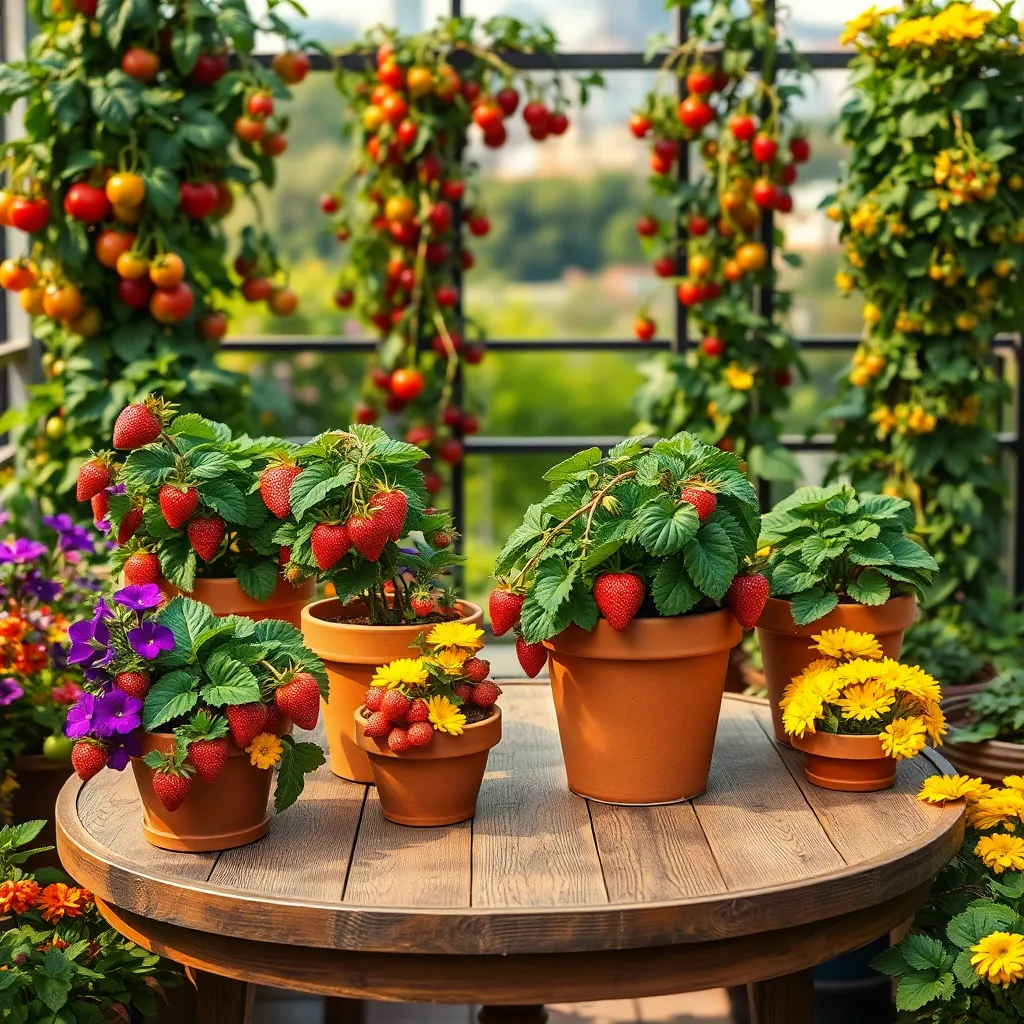
Container gardening offers a versatile way to grow fruit, especially if space is limited or you’re looking to add a decorative touch. **Choose containers with good drainage holes** to prevent waterlogging, which can harm plant roots.
For beginners, start with easy-to-grow fruits like strawberries or dwarf citrus varieties, as they thrive in pots. **Use a high-quality potting mix** that retains moisture yet drains well, and enrich it with organic matter like compost for added nutrients.
Watering is crucial in container gardening because pots dry out faster than ground soil. **Water your plants regularly**, checking the soil moisture daily, especially during hot weather, to ensure they receive adequate hydration.
Advanced gardeners might explore using self-watering containers, which regulate moisture levels and reduce maintenance. **Experiment with vertical gardening techniques** by stacking containers or using tiered stands to maximize space and create a lush, layered look.
Organic Pest Control Methods
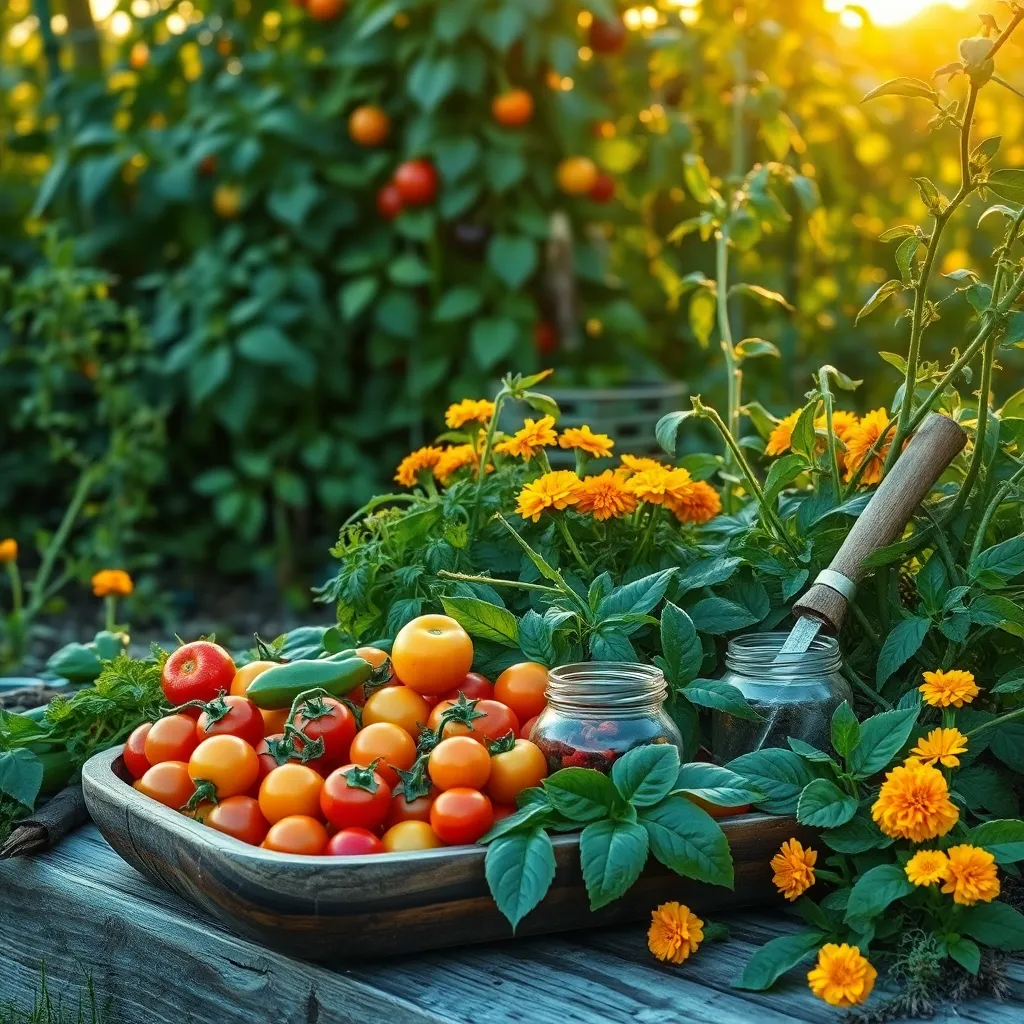
Organic pest control is essential for maintaining a healthy and vibrant fruit garden without resorting to chemicals. One effective method is introducing beneficial insects like ladybugs, which naturally prey on aphids and other soft-bodied pests.
Companion planting can also be a powerful tool in your organic arsenal. For example, planting marigolds near your fruit garden can help deter nematodes and certain beetles.
Creating homemade insecticidal soap is another practical approach. Mix one tablespoon of liquid soap with one quart of water and spray directly onto affected plants to control soft-bodied insects.
Using natural barriers is a simple yet effective technique. Floating row covers can protect young plants from flying insects while allowing sunlight and moisture to pass through.
Harvesting and Displaying Your Bounty
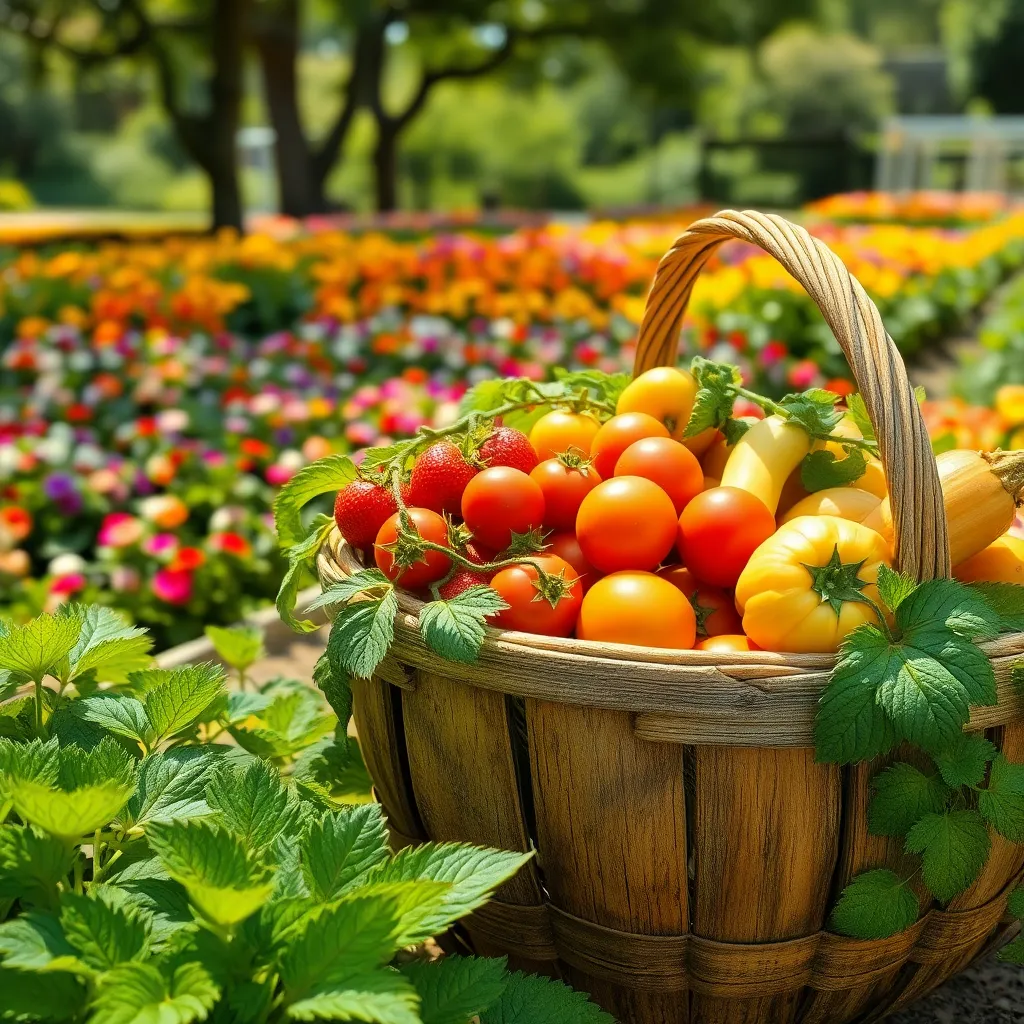
Harvesting your fruit at the right time ensures the best flavor and quality. Check the recommended maturity indicators for each type of fruit, such as color change or slight softening, before picking.
Use clean, sharp scissors or pruners to avoid damaging the plant when harvesting. This practice not only keeps the plant healthy but also encourages further growth and productivity.
After harvesting, rinse fruits gently to remove any dirt or insects. Pat them dry with a soft cloth to prevent moisture-related spoilage, especially if you plan to store them for a few days.
Displaying your harvest can be as rewarding as the growing process itself. Consider arranging a colorful fruit bowl on your kitchen counter or dining table as a vibrant centerpiece.
If you have an abundance of fruit, create homemade preserves or dried fruit snacks. Preservation techniques like canning or drying help extend the enjoyment of your garden’s bounty well into the off-season.
For a more decorative touch, use fruits in wreaths or garlands. These natural decorations not only highlight your gardening success but also bring a touch of nature indoors.
Conclusion: Growing Success with These Plants
As we explored the vibrant world of ‘9 Colorful Fruit Garden Inspirations,’ each concept offered a unique insight into nurturing relationships. From the importance of variety for emotional richness to the nurturing power of consistent care and attention, every concept is a reminder of the delicate balance needed for relationships to thrive. We delved into the sweetness of shared experiences, the strength found in supportive roots, and the rejuvenating effect of open communication. The resilience of weathering storms, the joy of growth, the wisdom in patience, and the necessity of mutual respect each paint a picture of flourishing partnerships.
Now, it’s time to plant these seeds in your relationship garden. Pick one concept to focus on this week, whether it’s sharing a new experience or dedicating time to honest conversations. Commit to taking this step and observe the change it inspires.
Remember, relationships bloom with attention and care. Save or bookmark this article as a handy guide to revisit these essential concepts. By doing so, you’re investing in a future of abundant relationship success, where love and understanding grow as naturally as the most vibrant of gardens. Your relationship journey is a beautiful one—nurture it with intention and watch it flourish.

